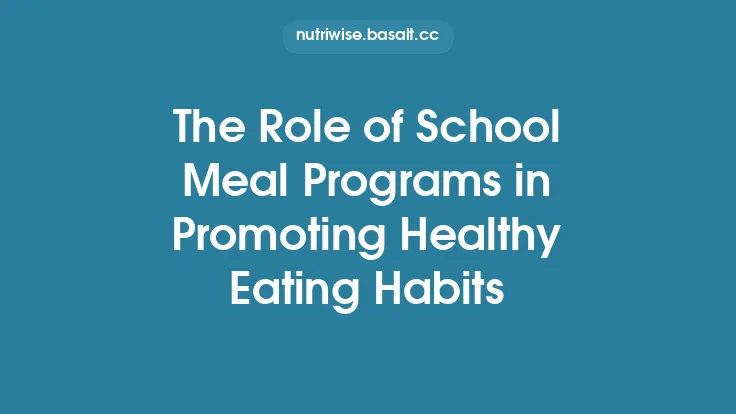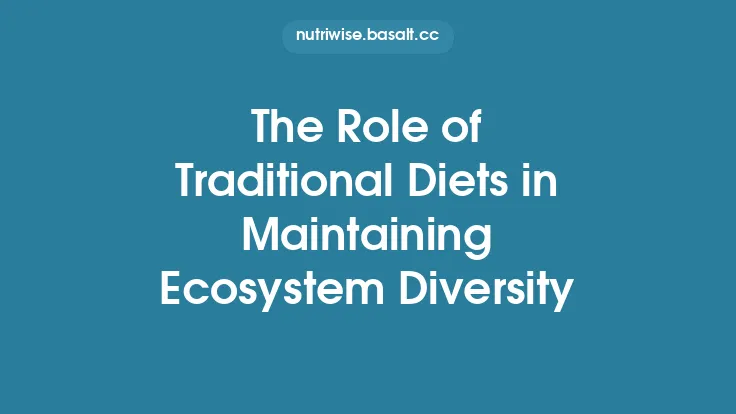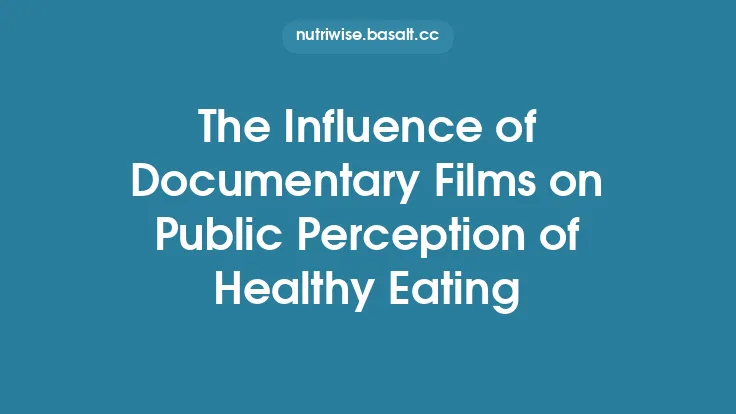Maintaining a nutritious diet over the long term is rarely a matter of willpower alone. Research across health psychology, behavioral nutrition, and public health consistently points to self‑efficacy—the belief in one’s capability to execute specific actions—as a pivotal driver of sustained healthy eating. When individuals feel confident that they can plan meals, resist tempting foods, and adapt their intake to changing circumstances, they are far more likely to translate dietary intentions into everyday practice. This article explores the concept of self‑efficacy, how it operates within the context of food choices, and evidence‑based strategies for strengthening it so that healthy eating becomes a reliable, enduring habit.
Understanding Self‑Efficacy
Self‑efficacy, a construct introduced by Albert Bandura, refers to an individual’s judgment about their ability to perform a particular behavior under given conditions. It is task‑specific, meaning that confidence in one domain (e.g., exercising) does not automatically transfer to another (e.g., cooking). Four primary sources shape self‑efficacy beliefs:
- Mastery Experiences – Successful performance of a behavior reinforces the belief that one can repeat it.
- Vicarious Learning – Observing peers or role models successfully engage in the behavior provides a template for one’s own actions.
- Social Persuasion – Verbal encouragement or constructive feedback from credible sources can boost confidence.
- Physiological & Affective States – Interpretation of bodily cues (e.g., feeling energized after a healthy meal) influences perceived capability.
In the nutrition arena, these sources translate into concrete experiences such as preparing a balanced recipe for the first time (mastery), watching a cooking demonstration (vicarious), receiving supportive feedback from a dietitian (social persuasion), and noticing improved energy levels after reducing added sugars (physiological).
Self‑Efficacy and Dietary Behavior
Self‑efficacy operates through several pathways that directly affect eating patterns:
- Goal Commitment – High efficacy leads to stronger commitment to dietary goals, reducing the likelihood of abandonment when obstacles arise.
- Effort Regulation – Individuals with greater confidence allocate more time and resources to meal planning, grocery shopping, and cooking.
- Resilience to Setbacks – When a lapse occurs (e.g., an unplanned indulgence), high self‑efficacy promotes rapid recovery and return to the intended pattern rather than a “what‑the‑hell” spiral.
- Strategic Planning – Confident eaters are more inclined to anticipate challenges (e.g., travel, work deadlines) and devise coping strategies in advance.
Empirical studies consistently demonstrate that self‑efficacy predicts a range of healthy eating outcomes, including higher fruit and vegetable intake, lower consumption of saturated fats, and adherence to portion‑control guidelines.
Measuring Self‑Efficacy in Nutrition Contexts
Accurate assessment is essential for both research and practice. Several validated instruments exist:
| Instrument | Focus | Sample Items |
|---|---|---|
| Weight Efficacy Lifestyle Questionnaire (WEL) | Confidence in resisting high‑calorie foods across situations | “I can refuse a dessert when I’m at a family gathering.” |
| Nutrition Self‑Efficacy Scale (NSES) | Ability to plan, prepare, and select nutritious foods | “I can prepare a balanced meal using only the ingredients I have at home.” |
| Food Choice Self‑Efficacy Scale (FCSES) | Confidence in making health‑conscious choices in various environments | “I can choose a low‑sodium option when eating out.” |
These tools typically employ Likert‑type responses (e.g., 1 = not at all confident to 5 = extremely confident) and can be administered digitally or on paper. Scores can guide individualized interventions by pinpointing low‑confidence domains.
Mechanisms Linking Self‑Efficacy to Healthy Eating
- Cognitive Appraisal – High self‑efficacy reshapes how individuals interpret dietary cues, viewing them as manageable rather than threatening.
- Behavioral Automation – Repeated successful actions become habitual; confidence accelerates this transition from deliberate effort to automatic routine.
- Neurobiological Correlates – Functional imaging studies reveal that self‑efficacy is associated with activation in brain regions governing executive control (prefrontal cortex) and reward processing, supporting better regulation of cravings.
- Feedback Loops – Positive outcomes (e.g., weight stability, improved biomarkers) reinforce efficacy beliefs, creating a virtuous cycle.
Interventions to Strengthen Self‑Efficacy for Food Choices
1. Mastery‑Based Skill Training
- Hands‑On Cooking Workshops – Participants practice preparing nutrient‑dense meals, receiving immediate feedback.
- Meal‑Prep Challenges – Structured assignments (e.g., “prepare three lunches for the week”) provide concrete success experiences.
2. Modeling and Peer Demonstrations
- Video Tutorials – Show diverse individuals (different ages, cultural backgrounds) executing the same healthy recipes.
- Group Cooking Sessions – Observational learning occurs naturally when participants see peers navigate similar obstacles.
3. Structured Goal‑Setting and Feedback
- SMART Goals – Specific, Measurable, Achievable, Relevant, Time‑bound objectives (e.g., “Add one cup of vegetables to dinner three times per week”).
- Progress Tracking Tools – Mobile apps or paper logs that visualize adherence, offering immediate reinforcement.
4. Persuasive Communication
- Motivational Interviewing – Dietitians use reflective listening and affirmations to bolster confidence.
- Positive Reinforcement – Celebrating small wins (e.g., “You chose a whole‑grain option today!”) strengthens self‑belief.
5. Managing Physiological Signals
- Mindful Eating Practices – Training individuals to recognize satiety cues reduces misinterpretation of hunger as lack of self‑control.
- Stress‑Reduction Techniques – Since stress can diminish perceived efficacy, incorporating brief relaxation exercises can preserve confidence.
Role of Goal Setting and Self‑Monitoring
Goal setting is a cornerstone of self‑efficacy enhancement. When goals are incremental and observable, individuals can experience early mastery, which fuels further ambition. Self‑monitoring—recording food intake, portion sizes, or nutrient targets—provides tangible evidence of progress. Digital platforms now allow real‑time feedback, automatic reminders, and visual dashboards that make the link between effort and outcome explicit.
Environmental Supports and Self‑Efficacy
Even the most confident individuals can be undermined by unsupportive environments. Strategies to align the physical and social context with efficacy goals include:
- Kitchen Organization – Placing fruits and vegetables at eye level, storing whole‑grain products prominently.
- Grocery Store Navigation – Pre‑planned shopping lists that prioritize the perimeter (fresh produce, lean proteins).
- Workplace Food Policies – Advocating for healthier cafeteria options or vending machine selections.
When the environment reduces friction, self‑efficacy is more likely to translate into consistent behavior.
Technology‑Enhanced Approaches
Modern interventions leverage technology to amplify efficacy building:
- Interactive Apps – Offer step‑by‑step cooking guides, adaptive goal adjustments based on user performance, and community forums for peer modeling.
- Virtual Reality (VR) Simulations – Allow users to practice grocery shopping or restaurant ordering in a risk‑free setting, reinforcing confidence before real‑world execution.
- Artificial Intelligence (AI) Coaching – Algorithms analyze dietary logs and provide personalized suggestions, reinforcing mastery experiences.
These tools can be especially valuable for individuals with limited access to in‑person nutrition services.
Population‑Specific Considerations
Children and Adolescents
- Parental Modeling – Parents’ own efficacy beliefs strongly influence youth.
- School‑Based Programs – Hands‑on cooking labs and garden projects foster early mastery.
Older Adults
- Physical Limitations – Adapted kitchen tools (e.g., ergonomic knives) support confidence in food preparation.
- Cognitive Support – Simplified recipes and visual cue cards aid memory and reduce perceived difficulty.
Low‑Income Communities
- Resource‑Sensitive Training – Emphasize affordable, shelf‑stable nutritious foods and batch‑cooking techniques.
- Community Kitchens – Shared spaces provide both mastery opportunities and social persuasion.
Tailoring interventions to the unique barriers and strengths of each group maximizes efficacy gains.
Research Evidence and Meta‑Analyses
A 2022 meta‑analysis of 48 randomized controlled trials (RCTs) examining self‑efficacy‑focused nutrition interventions reported a medium effect size (d ≈ 0.55) for increased fruit and vegetable consumption and a small but significant reduction in added sugar intake (d ≈ 0.30). Subgroup analysis revealed that interventions combining skill mastery with feedback outperformed those relying solely on educational content.
Longitudinal cohort studies further demonstrate that baseline self‑efficacy predicts dietary quality five years later, even after controlling for socioeconomic status, education, and baseline health metrics. These findings underscore the durability of efficacy beliefs as a determinant of eating behavior.
Practical Recommendations for Practitioners
- Assess Efficacy Early – Use brief validated scales to identify low‑confidence domains.
- Start Small – Set achievable micro‑goals (e.g., “Add a vegetable to one meal per day”) to generate quick mastery.
- Provide Immediate Feedback – Celebrate successes within 24 hours to reinforce the efficacy‑outcome link.
- Incorporate Modeling – Share videos or live demonstrations of the target behavior performed by relatable individuals.
- Facilitate Skill Repetition – Offer repeated practice opportunities, such as weekly cooking challenges.
- Leverage Technology – Recommend apps that align with the client’s tech comfort level for self‑monitoring and prompts.
- Modify the Environment – Conduct a “food‑environment audit” with the client and co‑create a plan to reduce barriers.
- Re‑evaluate Periodically – Re‑assess self‑efficacy every 4–6 weeks to track progress and adjust goals.
Policy Implications
Policymakers can foster a population‑wide boost in dietary self‑efficacy by:
- Funding Community Cooking Programs – Grants for local kitchens, school gardens, and senior‑center workshops.
- Mandating Clear Nutrition Labeling – Simplified, front‑of‑pack symbols aid confidence in making quick, healthy choices.
- Supporting Digital Health Initiatives – Subsidies for low‑income families to access nutrition‑focused apps and internet connectivity.
- Integrating Self‑Efficacy Training into Public Health Campaigns – Messaging that emphasizes skill acquisition (“You can learn to prepare a balanced plate in 10 minutes”) rather than solely promoting outcomes.
These structural supports amplify individual efficacy gains and help translate them into sustained public health improvements.
Future Research Directions
- Neurobehavioral Correlates – Further exploration of brain circuitry linking self‑efficacy to food‑related decision making.
- Long‑Term Maintenance – Identifying the dosage and timing of efficacy‑boosting interventions needed to prevent decay after 12 months.
- Cultural Adaptation – Developing culturally resonant mastery experiences that respect diverse culinary traditions.
- Integration with Other Psychological Constructs – Examining how self‑efficacy interacts with habit formation, identity, and perceived behavioral control in complex dietary ecosystems.
- AI‑Driven Personalization – Testing adaptive algorithms that tailor efficacy‑building tasks based on real‑time performance data.
Advancing knowledge in these areas will refine the precision of interventions and broaden their impact.
Concluding Perspective
Self‑efficacy stands out as a modifiable, evidence‑based lever for turning healthy eating intentions into lasting practice. By cultivating mastery experiences, providing relatable models, delivering constructive persuasion, and shaping supportive environments, individuals can develop a robust belief in their capacity to nourish themselves well—regardless of life’s inevitable fluctuations. When confidence is nurtured systematically—through clinical guidance, community resources, and technology—healthy eating evolves from a sporadic effort into a reliable, self‑sustaining habit, benefitting both individual well‑being and public health at large.





